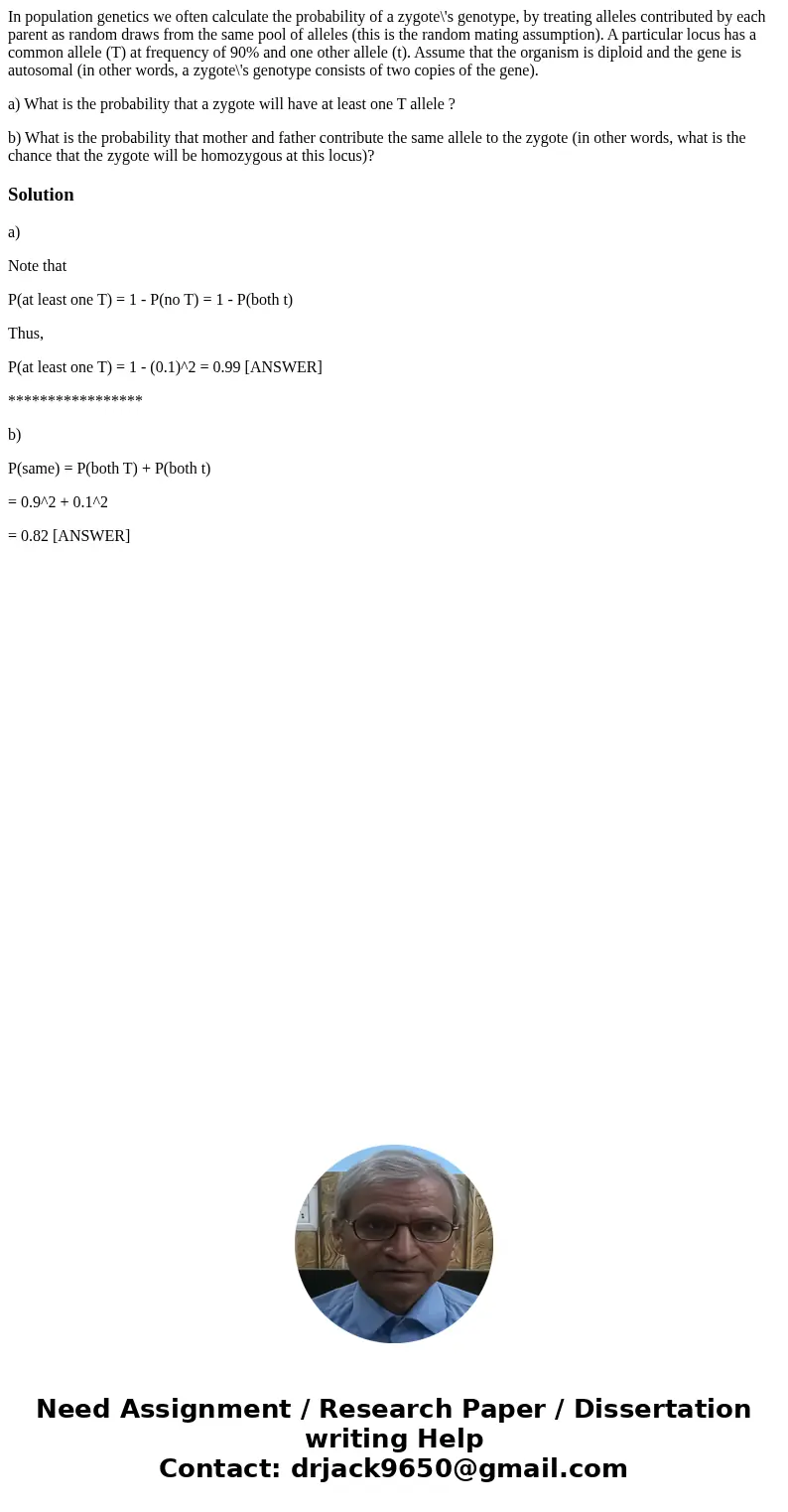In population genetics we often calculate the probability of
In population genetics we often calculate the probability of a zygote\'s genotype, by treating alleles contributed by each parent as random draws from the same pool of alleles (this is the random mating assumption). A particular locus has a common allele (T) at frequency of 90% and one other allele (t). Assume that the organism is diploid and the gene is autosomal (in other words, a zygote\'s genotype consists of two copies of the gene).
a) What is the probability that a zygote will have at least one T allele ?
b) What is the probability that mother and father contribute the same allele to the zygote (in other words, what is the chance that the zygote will be homozygous at this locus)?
Solution
a)
Note that
P(at least one T) = 1 - P(no T) = 1 - P(both t)
Thus,
P(at least one T) = 1 - (0.1)^2 = 0.99 [ANSWER]
*****************
b)
P(same) = P(both T) + P(both t)
= 0.9^2 + 0.1^2
= 0.82 [ANSWER]

 Homework Sourse
Homework Sourse